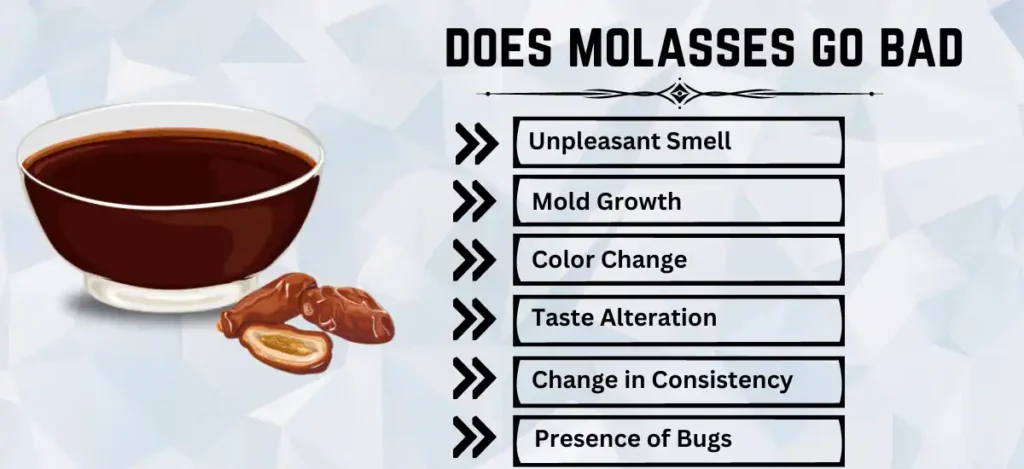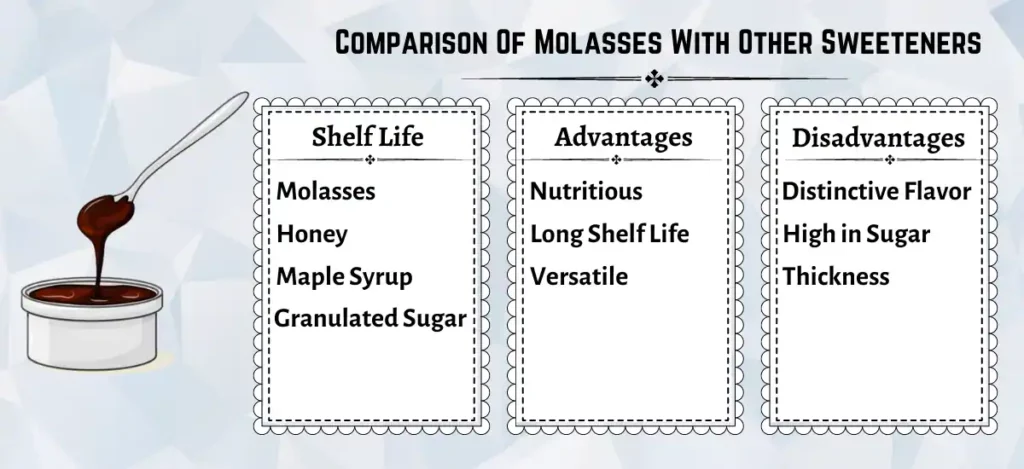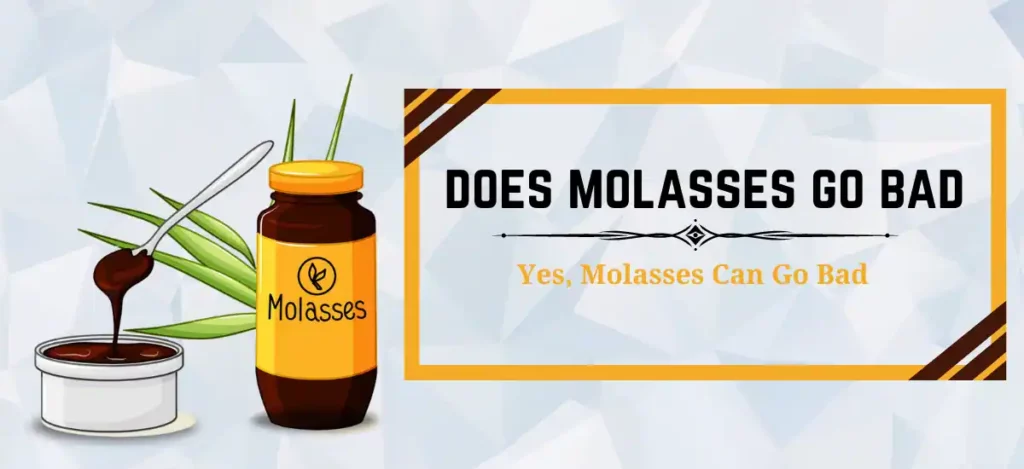Molasses, due to its high sugar content and low moisture, has an impressive shelf life. Unopened molasses, when stored correctly in a cool, dark place, can last up to 10 years. Once opened, molasses should be used within 2 years for best quality, although it may still be safe to consume after this time.
Keep in mind that proper storage is crucial to extend the shelf life of molasses, and it’s always important to check for signs of spoilage before use. So, while molasses can indeed go bad, with the right storage methods, it can be kept for a very long time.
Factors Influencing Molasses’ Shelf Life
- Storage Methods: The way you store molasses can significantly impact its shelf life. It should be kept in a cool, dark place in an airtight container to prevent exposure to air and moisture.
- Type of Molasses: Different types of molasses, such as light, dark, and blackstrap, may have different shelf lives due to variations in sugar content and consistency.
- Temperature: High temperatures can degrade the quality of molasse over time. It’s best to store it in a cool environment.
- Light Exposure: Exposure to light can cause molasse to darken and lose its flavor. Therefore, it should ideally be stored in a dark location.
- Air Exposure: When molasses comes into contact with air, it can lead to oxidation which can affect its taste and quality. Always ensure to seal the container tightly after use.
- Container Material: Molasses should be stored in non-reactive containers like glass or plastic to prevent any chemical reactions that could alter its taste or quality.
- Hygiene Practices: Using clean utensils to scoop out molasses can prevent the introduction of bacteria and extend its shelf life.
- Frequency of Use: Regularly opening and closing the container can introduce air and contaminants, potentially shortening the molasses’ shelf life.
Proper Storage of Molasses
- Cool Location: Store molasses in a cool and dry place away from heat sources like the stove or oven to prevent degradation.
- Dark Place: Light can cause molasses to darken and lose its flavor. Store it in a dark location or in a dark-colored container.
- Airtight Container: Keep your molasses in an airtight container to reduce exposure to air and moisture which can lead to spoilage.
- Glass or Plastic Containers: Store molasse in non-reactive containers like glass or plastic to avoid any chemical interactions.
- Clean Utensils: Always use clean utensils when scooping out the molasse to avoid introducing bacteria into the container.
- Avoid Cross-Contamination: Never mix used molasse with fresh molasse. This could introduce contaminants and reduce the overall shelf life.
- Optional Refrigeration: While not necessary, refrigerating molasse can further extend its shelf life, especially in hot climates.
- Sealed Properly: Always ensure the molasse container is sealed properly after each use to maintain its quality.
How to Tell if Molasses Has Gone Bad

- Unpleasant Smell: Fresh molasss has a sweet, somewhat smoky scent. If it starts to smell sour or off, it may be spoiled.
- Mold Growth: If you spot mold or any other type of growth in your molasse, it’s a clear indication of spoilage.
- Color Change: While molasse is naturally dark, any dramatic shift in color could be a sign that it’s gone bad.
- Taste Alteration: Molasse has a distinctive sweet and slightly bitter taste. If it tastes sour or strange, it’s best to dispose of it.
- Change in Consistency: Fresh molasse has a thick, syrupy consistency. If it becomes watery or develops lumps, it might be spoiled.
- Presence of Bugs: If you notice bugs in your molasse, it might be contaminated and should be thrown away.
Comparison Of Molasses With Other Sweeteners

–Shelf Life Comparison:
- Molasses: The shelf life of molasse is exceptionally long, with unopened bottles lasting up to 10 years and opened ones lasting up to 2 years.
- Honey: Pure honey can last indefinitely if stored properly, though it may crystallize over time.
- Maple Syrup: Pure maple syrup can last indefinitely unopened. Once opened, it should be refrigerated and used within a year.
- Granulated Sugar: Sugar also has an indefinite shelf life but can clump together if exposed to moisture.
– Advantages of Using Molasses:
- Nutritious: Molasses is rich in essential minerals like calcium, magnesium, and iron.
- Long Shelf Life: Molasse has a longer shelf life compared to many other sweeteners.
- Versatile: It can be used in a variety of dishes, from sweet baked goods to savory marinades and sauces.
– Disadvantages of Using Molasses:
- Distinctive Flavor: Molasse has a unique, robust flavor that might not be suitable for all recipes.
- High in Sugar: While it contains nutrients, molasse is still high in sugar and should be used in moderation.
- Thickness: Its thick consistency can make it a bit difficult to work with in some recipes.
Frequently Asked Questions
Q1. Does unopened molasses go bad?
Ans. Unopened molasse can last for a remarkably long time due to its high sugar content and low moisture content that inhibits the growth of bacteria and molds. If stored properly in a cool, dark place, unopened molasses can last up to 10 years.
Q2. Does opened molasses go bad?
Ans. Yes, opened molasse can go bad but it typically has a good shelf life. If stored correctly in a cool, dark place, and in an airtight container, opened molasse can last up to 2 years. However, always check for signs of spoilage before using it.
Q3. How long does molasses last in the fridge?
Ans. Storing molasses in the fridge is not necessary, but it can help prolong its shelf life, especially in warmer climates. When stored in the refrigerator, molasse can last up to 5 years. However, it might crystallize over time due to the cold temperature, but this does not mean it has gone bad. Simply warming it up will dissolve the crystals and make it easy to pour again.
